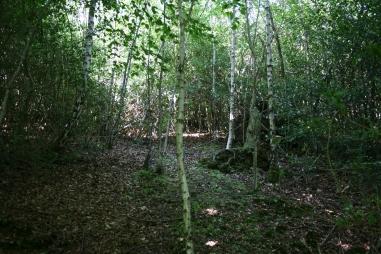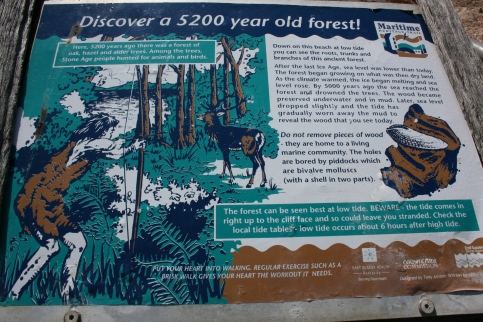You cannot ignore history if you want to understand woods, but there are some days and weeks when this seems more-than-ever true, such as considering the impact of storms. Charles Elton was particularly interested in dead wood and would try to take advantage of any blowdowns at Wytham, as he notes in his diary (Elton, 1942-1965) for September 28th 1958. “On reports of big windfalls during storms last week, I visited the Chalet and made some arrangements with D. Meads for the preservation of two more log sites for beech. One is across the Singing Way, a large branch, of which three bits are to be kept and towed into good ground cover nearby (Log 45). There was a similar one across the path in ‘Blenheim’, but I decided not to claim this. A third near this – between the Chalet and Upper Seeds – fell about 3 months ago: a bit will be kept and towed to cover (Log 46).” However, this was clearly not that big a windfall, more like the loss of the odd tree as still happens. For a woodland ecologist it is somewhat frustrating that over the last half-century Wytham Woods have missed the various extreme storms such as those of 1987 and 1990 and we have to look elsewhere to see their effect.
Windblown logs in Wytham
One place that was badly hit by the 1987 storm was Toy’s Hill in Kent and I had the opportunity recently to compare the current state to descriptions made in 1992 (King, 1992). Then the site was still very open. Some compartments had been cleared of fallen trees and there was concern about the degree of bare soil and compaction damage. Meanwhile compartments that had been left to recover naturally through minimum intervention with no clear-up, were described as almost impenetrable.
Toy’s Hill in 1992, 5 years after the 1987 storm: the sign is for the minimum intervention area.
Thirty years on from the storm, virtually all the gaps have been filled with dense young growth particularly of birch and holly but with a scatter of oak, beech and other species. The areas that were not cleared after the storm can still be identified by the occasional surviving old tree and fallen dead wood; the root-plate mounds are also more obvious, but on the whole the recovery of the different compartments seems to have been broadly similar.
Toy’s Hill in 2017: cleared area top left, minimum intervention areas bottom left; and one of the signs still surviving, despite the demise of the Nature Conservancy Council.
Then on to Surrey to look for Carex depauperata. This is now rare, but had been quite common in the county. The Fielding-Druce herbarium in Oxford has 15 separate sheets of plants collected between about 1840 and 1940! However, it went into decline thereafter (probably a lack of coppicing, rather than collecting) and had last been seen in the early 1970s. After the 1987 Great Storm it reappeared, where a large branch had broken off a tree, creating a gap and some ground disturbance. Plantlife/The Species Recovery Trust have been keeping an eye on it since (Rich and Birkinshaw, 2001) and it seems to still be doing well in 2017.
Specimens of Carex depauperata from the Herbarium; photograph of flower head (not collected!) and main tussock from Surrey in 2017.
So, storms can resurrect lost plants, but on the coast they can also resurrect whole forests. A few years ago, I visited Borth, just north of Aberystwyth, to see the stumps of 5,000 yrs-old tree stumps, uncovered following a winter storm. Allen (1992) describes wind-blown trees mostly dated from 4-6,000 yrs ago found in the Severn Estuary.
The re-emerged forest on Borth beach in 2014
Recently I was told about another buried forest from 5,000 years ago that exists just off the Kent-Sussex coast at Pett Levels. There is definitely something romantic, and exciting, about standing in a really ancient forest – even if you can only do it at low tide.
ALLEN, J. R. L. 1992. Trees and their Response to Wind: Mid Flandrian Strong Winds, Severn Estuary and Inner Bristol Channel, Southwest Britain. Philosophical Transactions: Biological Sciences, 338, 335-364.
ELTON, C. S. 1942-1965. Elton Archive: notes on the Wytham Area 1942-1965 [Online]. Available: http://ora.ox.ac.uk/objects/uuid:89c5e479-6003-45ba-bd78-8a8a12858bf1.
KING, G. 1992. The management of storm-damaged woodland at Toy’s Hill Kent. MSc, Oxford Polytechnic (Oxford Brookes University).
RICH, T. & BIRKINSHAW, C. 2001. Conservation of Britain’s biodiversity: Carex depauperata With.(Cyperaceae), Starved Wood-Sedge. Watsonia, 23, 401-412.
















